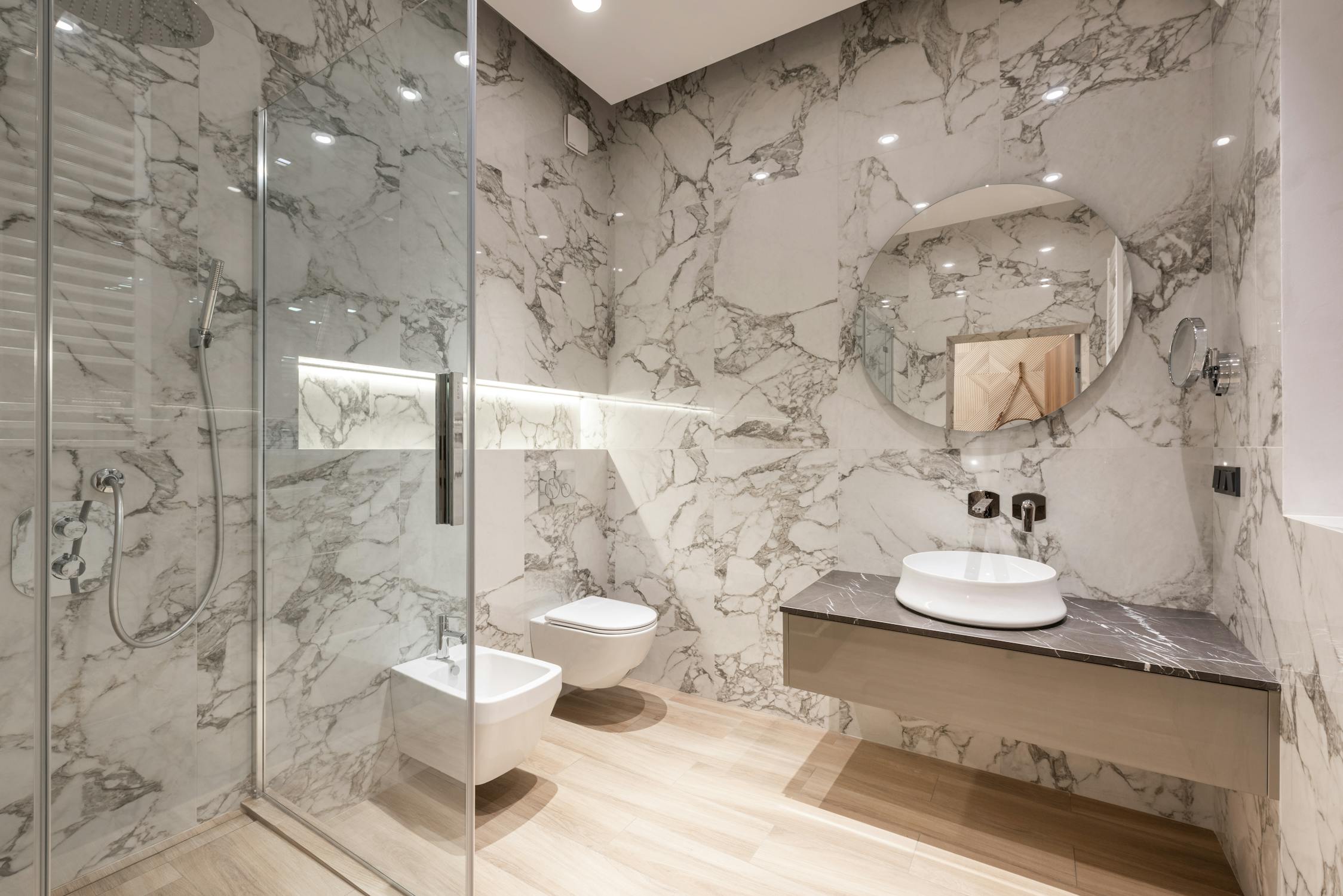Is a Bidet Worth It? Here's How to Decide

As an Amazon Associate I earn from qualifying purchases.
A bidet can be a great addition if you want to add an extra layer of hygiene to your bathroom routine. But is a bidet worth it for you?
Bidets are an excellent investment that can both help save you money and be more environmentally friendly. They accomplish this by significantly reducing the amount of toilet paper you need. Additionally, using a bidet properly is generally more sanitary than only wiping.
The craze for bidets is sweeping the world, and it's not hard to see why. Bidets are better for the environment than toilet paper while also costing less over time. And the best part? These devices are surprisingly easy to install.
What makes bidets worth it
Bidets pack several benefits that make them superior to using toilet paper only. Not only do they save you money, but they also provide a more thorough clean.
Here are some examples of what makes bidets worth it:
- Environmentally friendly: Bidets significantly reduce the amount of toilet paper you need. As a result, these devices are a solid investment if you want to go greener.
- Saving you money: Using less toilet paper means less spending for you. In fact, bidets typically save enough money to pay for themselves within a year.
- Hygiene: Believe it or not, bidets are more sanitary than toilet paper. The water from their jets is better at removing waste than wiping is. Plus, you can let yourself dry without having to touch your bottom.
- Reduced skin irritation: The friction from wiping can cause chafing or irritation. Thankfully, bidets help avoid this problem by eliminating the need to wipe.
- Better for home plumbing: Toilet paper is the most common culprit behind plumbing issues. And since bidets require essentially no wiping, that also means fewer clogs.
What are the cons of using bidets?
Even though the pros outweigh the cons, there are still some downsides to bidets. And depending on your situation, these downsides may make you reconsider getting one.
Below are some cons of using bidets:
- Renovations: Your bathrooms may require minor renovations to make room for a bidet. And unfortunately, this can significantly increase the price of installation.
- Learning curve: It may take some time to get accustomed to using a bidet. Thankfully, the simple design makes it easy to pick up and learn.
- Infection: If your bidet's nozzle is misaligned, it may splash around dirty water in your toilet. As a result, bidets can increase the risk of infection for people with weakened immune systems.
- Maintenance: Unlike toilet paper, bidets require you to perform regular cleaning and maintenance. Otherwise, your device may become unsanitary or no longer function.
- Initial cost: Installing a bidet will cost significantly more than buying a pack of toilet paper. However, the long-term savings from this investment make it worthwhile for you.
The types of bidets
Bidets come in several varieties to fit the needs of any bathroom. And by knowing the differences, you can better find the perfect device for you.
Below are the types of bidets:
- Bidet attachments: Bidet attachments mount directly on your toilet. They're the most straightforward way to upgrade your lavatory. But they lack the features of high-end bidets.
- Stand-alone bidet: These bidets are independent units meant specifically for washing yourself. They usually stand next to your toilet and thus are best for bathrooms with space to spare.
- Portable bidet: These compact devices are perfect if you travel a lot. They're also a great starting place if you want to try a bidet without buying an entire unit.
- Bidet seats: Commonly found in American bathrooms, these bidets replace your toilet seat. Most boast extra functions, such as seat warmers and air dryers.
- Built-in bidets: These products are a combination between toilets and bidets. They're your most expensive option. And also the most luxurious and convenient one.
How to choose the best bidet for you
There are a few factors you should think about before buying a bidet. That way, you ensure that your purchase is as worth it as possible:
- Bathroom size: Do you have a small bathroom with no room to spare? Then you want a bidet attachment or seat instead of a stand-alone unit.
- Budget: Stand-alone and built-in bidets tend to be the most expensive options. Meanwhile, portable and attachable bidets are typically quite affordable.
- Function: When choosing a bidet, consider what extra functions are crucial to you. Bidet attachments generally lack the temperature control and air drying of built-in bidets.
- Ease of use: Are you new to bidets? If so, try starting with a bidet seat or attachment. Stand-alone units can be hard to get used to since they require you to switch seats.
Do I still need toilet paper if I have a bidet?
Don't throw out the toilet paper just yet if you decide to install a bidet. While these devices don't require wiping, there are a couple of reasons you should keep some rolls on hand.
The most important reason is to pat yourself dry. The water jet from bidets is excellent at washing debris away but will leave your bottom soaking wet. And if you're in a hurry, waiting to dry might not be an option.
Additionally, there are times when you may need to wipe just a little to be hygienic. This is particularly true if your toilet space is cramped and finding a good bidet angle is tricky.
Finally, bidets can break down like any other product. And if you don't have another installed, then a spare roll of toilet paper will come in handy. Not to mention you might have guests over who prefer having the option to wipe.
